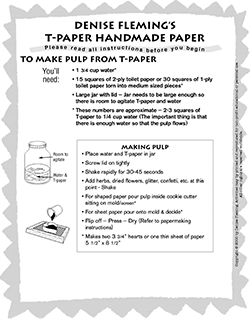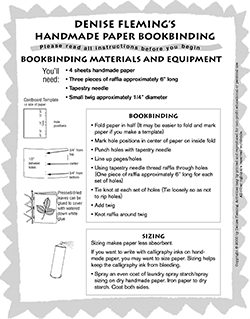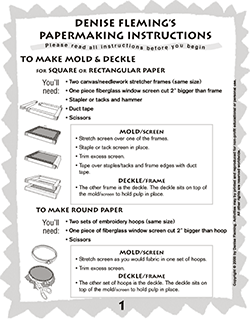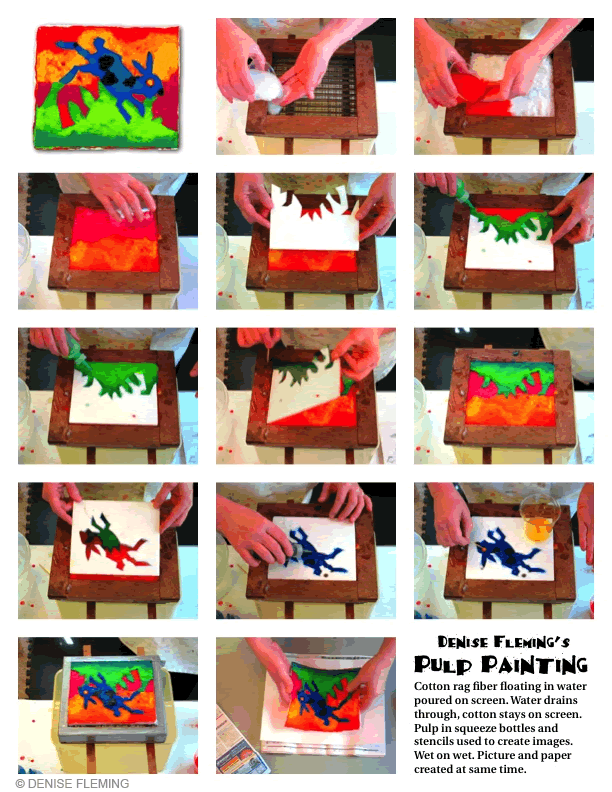
Pulp Painting
is easy to demonstrate, but difficult to explain. But I’ll give it a go:
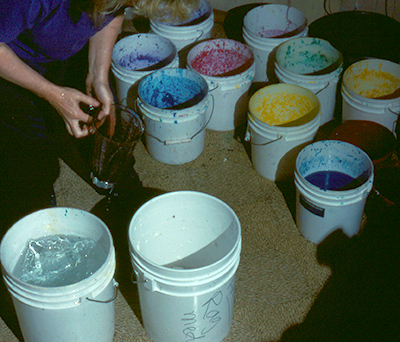
Cotton rag fiber suspended in water (a wet, messy, colorful slurry) is poured through hand-cut stencils (made from foam meat trays) onto a screen (a window screen will do). The result—an image in handmade paper. The paper is the picture. The picture is the paper.
The advantages of this technique are many:
- I now have a use for all those discarded yogurt containers and hair coloring squeeze bottles; they make excellent pouring cups and "drawing" tools.
- I've developed marvelous upper-body strength, without the cost of a gym membership, from hauling forty-two pound pails of damp fiber (pulp) around the studio.
- At the market I’m known for my fashion sense; my pulp splattered clothing makes quite an impression.
- I’ve discovered that a bucket of pulp is the better mousetrap (I am withholding the disgusting details).
- Looking for additions to my motley collection of blenders (used to mix pigment and chemicals) gives me a reason to stop and shop garage sales.
- Friends have found that the five-gallon pulp shipping pails make nifty nesting buckets for Rhode Island Reds.
- And, of course, there is the pleasure of swirling my hands through five gallons of glorious color to mix fiber and pigment.
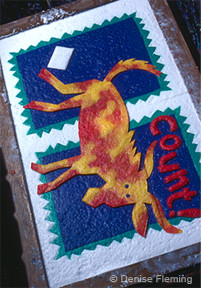
The drawbacks are few:
- Cotton rag fiber spoils, and it is no secret when it does. Open the doors and windows and turn on the fans!
- Then there is the problem of color test strips catching fire in the microwave—quite a dramatic touch, but a bit dangerous.
So why pulp painting? It works.
★ Published in the March/April 1998 Horn Book Magazine ★
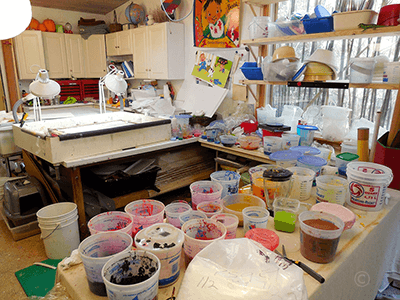
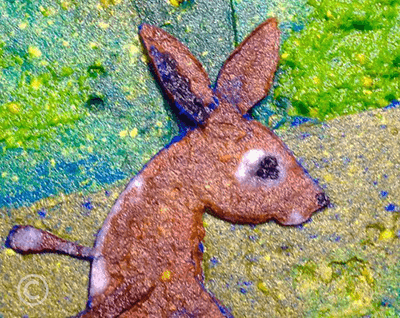
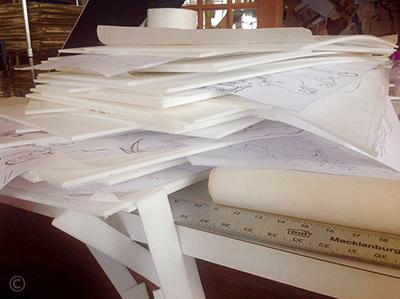
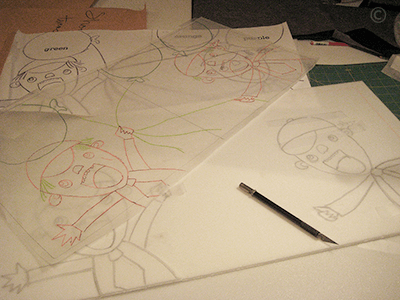
Papermaking Demonstration Video:
A Visit with Denise Fleming
Available on Denise's website: www.denisefleming.com/pages/papermaking/papermaking-main#video.
Papermaking Activities
